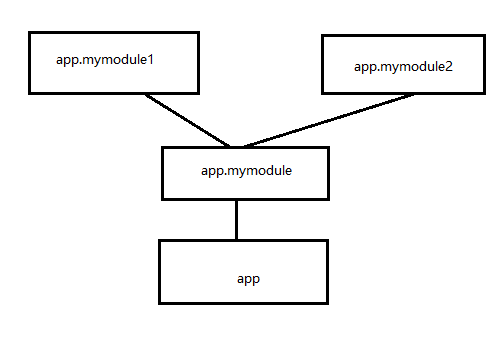
以上,app.mymodule1, app.mymodule2,app.mymodule都是针对某个领域的,比如app.mymodule1中定义directive, app.mymodule2中定义controller, app.mymodule把app.mymodule1和app.mymodule2汇总到一处,然后app这个主module依赖app.mymodule。
文件结构:
mymodule/
.....helloworld.controller.js <在app.mymodule2中>
.....helloworld.direcitve.js <在app.mymodule1中>
.....index.js <在app.mymodule中>
.....math.js <在一个单独的module中>
app.js <在app这个module中>
index.html
helloworld.controller.js:var angular = require("angular");module.exports = angular.module("app.mymodule2", []).controller("HWController", ["$scope", function ($scope) { $scope.message = "This is HWController";}]).name; 以上,通过module.exports导出module,通过require导入module。helloworld.direcitve.js:var angular=require("angular");module.exports = angular.module("app.mymodule1", []).directive("helloWorld", function () { return {restrict: "EA",replace: true,scope: { message: "@"},template: "<div><h1>Message is {{message}}.</h1><ng-transclude></ng-transclude></div>",transclude: true }}).name; 接着,在index.js把pp.mymodule1和app.mymodule2汇总到一处。var angular = require("angular");var d = require("./helloworld.directive");var c = require("./helloworld.controller");module.exports = angular.module("app.mymodule", [d, c]).name;
exports = { add: function (x, y) {return x + y; }, mul: function (x, y) {return x * y; }}; var angular = require("angular");var mymodule = require("./mymodule");var math = require("./mymodule/math");angular.module("app", [mymodule]) .controller("AppController", ["$scope", function ($scope) {$scope.message = "hello world";$scope.result = math.add(1, 2); }]);以上所述是小编给大家分享的AngularJS中module模块的导入导出,希望大家喜欢。